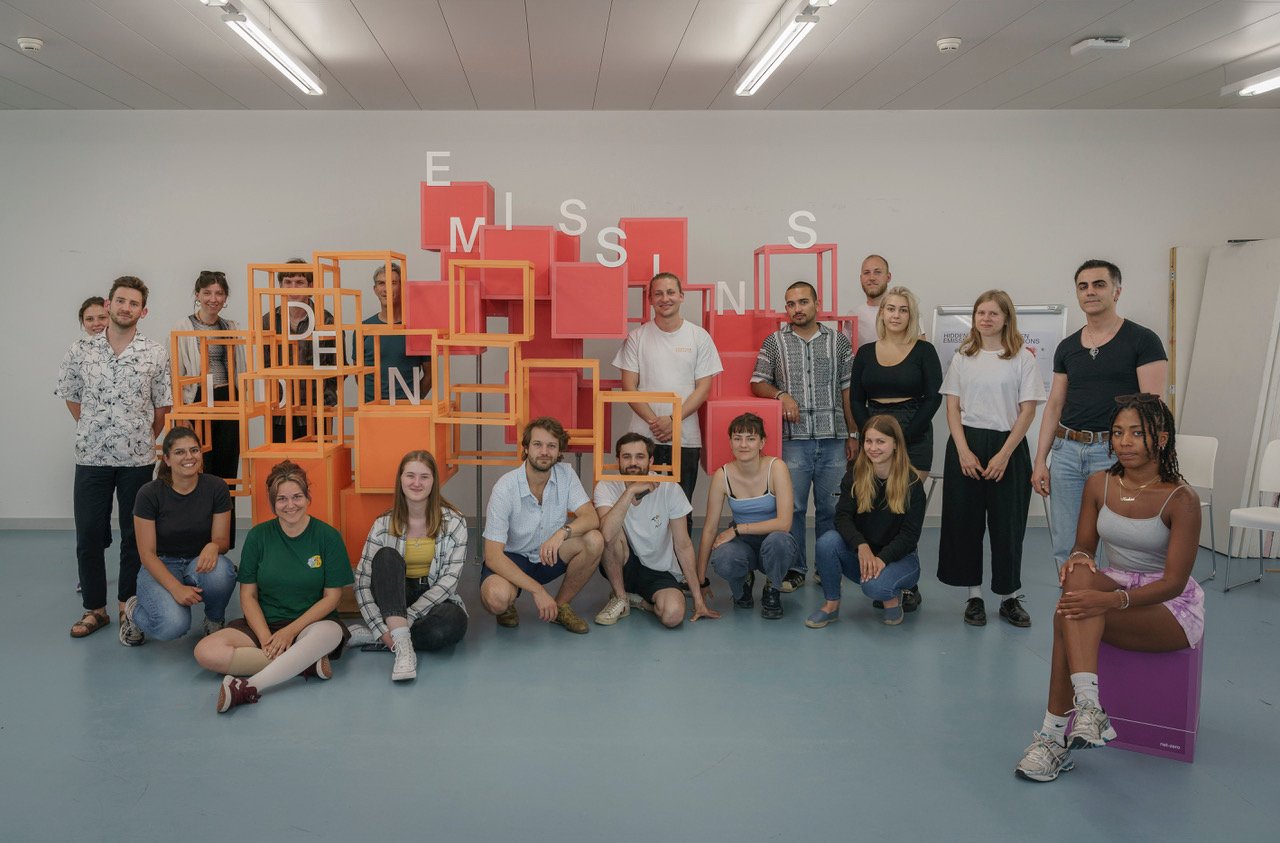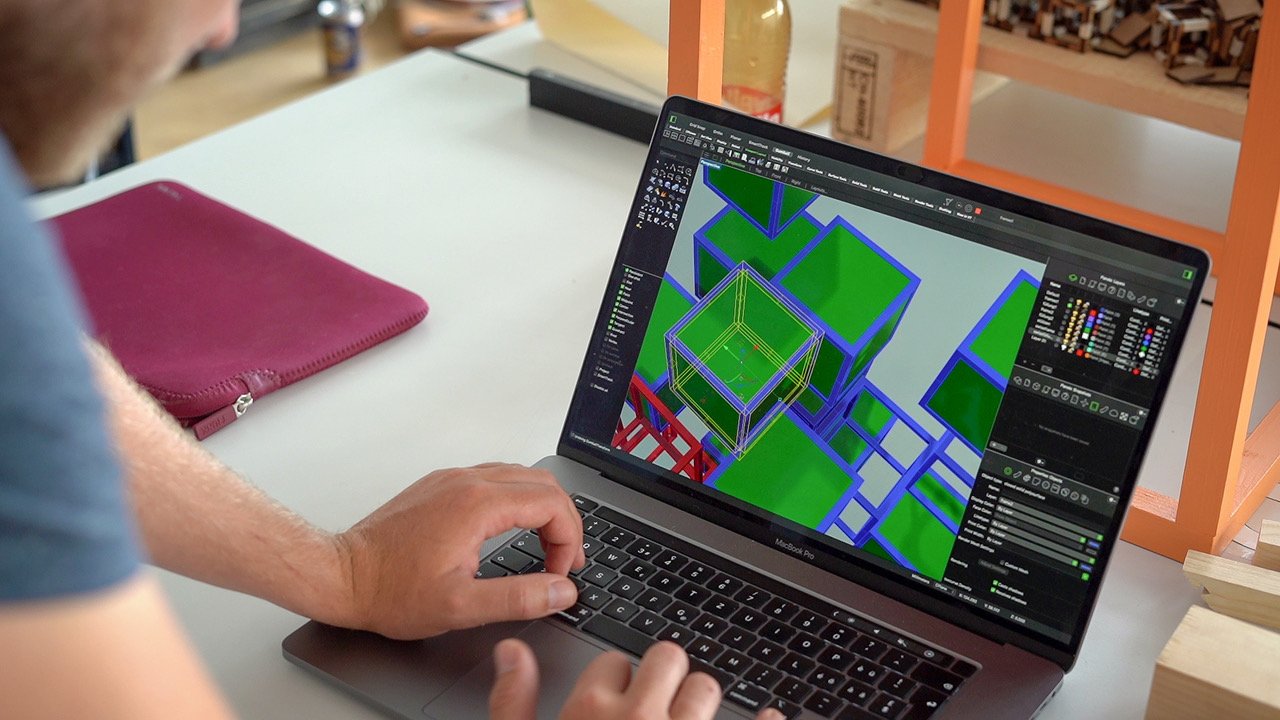DataSculpture: Financial Footprint – Hochschule Luzern, Design & Kunst
DataSculpture: Financial Footprint
Hochschule Luzern, Design & Kunst
Inspiration für dieses Projekt bot die Lage des Alten Botanischen Gartens UZH, der sich in unmittelbarer Nähe des Paradeplatzes befindet. Die Datenskulptur macht erfahr- und erlebbar, welche einflussreiche Rolle der Finanzplatz in Bezug auf den CO2-Fussabdruck der Schweiz innehat.
«Über Geld spricht man nicht» ist nicht nur ein geläufiges Sprichwort, es entpuppt sich auch immer wieder als Tatsache. Beschäftigen wir uns damit, wie wir unseren Lebensstil nachhaltiger gestalten und unseren CO2-Fussabdruck reduzieren können, stehen meist Themen wie Ernährung, Bekleidung oder Transportmittel im Mittelpunkt. Vom Geld ist dabei kaum die Rede – obwohl sein Einfluss riesig ist.
«Die vom Schweizer Finanzplatz gesteuerten Aktivitäten verursachen ein Zwanzigfaches der schweizerischen «territorialen» Treibhausgas-Emissionen – oder über 2 % des weltweiten Ausstosses», schreibt die Klima Allianz Schweiz. Doch wie viel ist das genau? Und auf welchen Zahlen basieren solche Aussagen?
16 Studierende der Bachelor-Studienrichtungen Data Design+Art und Objektdesign sind diesen Fragen nachgegangen mit dem Ziel, den immensen Einfluss, den die Schweiz mit dem Finanzplatz auf das Klima weltweit hat, sicht- und erfassbar zu machen. Die dabei entstandene Datenskulptur gleicht einer Wolke, die mit ihren geschlossenen und offenen Kuben auf die uneindeutige Datenlage verweist. Zudem können die Besuchenden mittels einem analogen AR-Instrument einen Blick auf alternative, nachhaltige Szenarien werfen, die sich dabei mit der Skulptur überlagern. Am höchsten Punkt des alten botanischen Gartens, wo die Aussicht bis zum Paradeplatz reicht, führt sie uns vor Augen, dass es sehr wohl eine Rolle spielt, wie wir unser Geld anlegen. Egal ob es sich dabei um unser Privatvermögen, unsere Pensionskassen oder die grossen Geldinstitute handelt: Über das Geld soll endlich gesprochen werden!
Am Projekt «DataSculpture: Financial Footprint» haben folgende Studierenden mitgearbeitet: Fabia Anina Cozatti, Sebastian Erb, Kerim Ergül, Noelia Giger, Timo Hänni, Sina Joller, Aris Kienast, Alexandra Kubli, Keshia Soukeyna Leconte, Said Nagschbandi, Mia Alina Pradal, Luca Signorini, Anastasia Sorokoumova, Nada Stevic, Annina Weiss, Nadine Werner, Timothy Leopold Widmer
Dozierende: Isabelle Bentz (Leitung Data Design+Art), David Colombini, Christoph Schindler (Leitung Objektdesign), Christof Sigerist
Fotos: Matthias Pfammatter
Projektpartnerin: Asti Rösle, Klima-Allianz Schweiz
Inspiration for this project was provided by the location of the Old Botanical Garden UZH, which is in the immediate vicinity of Paradeplatz. The data sculpture makes it possible to experience and witness the influential role played by the financial center in relation to Switzerland's carbon footprint.
“Money is not something you talk about” is not only a common saying, it also proves to be a fact time and again. When we discuss how to make our lifestyles more sustainable and reduce our carbon footprint, the focus is usually on topics such as nutrition, clothing, or transportation. Money is rarely mentioned, despite its immense influence.
“Activities driven by the Swiss financial center cause twenty times Switzerland’s “territorial” greenhouse gas emissions – or over 2% of global emissions,” writes Climate Alliance Switzerland. But how much is that exactly? And on what figures are such statements based?
16 students from the bachelor’s degree programs Data Design+Art and Object Design have investigated these questions with the aim of making the immense influence that Switzerland, with its financial center, has on the global climate visible and tangible. The resulting data sculpture resembles a cloud, with its closed and open cubes pointing to the ambiguous nature of the data. Additionally, visitors can use an analog augmented reality instrument to glimpse alternative sustainable scenarios, which are superimposed on the sculpture. Located at the highest point of the old botanical gardens, where the view extends all the way to Paradeplatz, the installation reminds us that how we invest our money does matter. Whether it is our private assets, pension funds, or major financial institutions, it is time to finally discuss money.
The following students contributed to the project “DataSculpture: Financial Footprint”: Fabia Anina Cozatti, Sebastian Erb, Kerim Ergül, Noelia Giger, Timo Hänni, Sina Joller, Aris Kienast, Alexandra Kubli, Keshia Soukeyna Leconte, Said Nagschbandi, Mia Alina Pradal, Luca Signorini, Anastasia Sorokoumova, Nada Stevic, Annina Weiss, Nadine Werner, Timothy Leopold Widmer.
Lecturers: Isabelle Bentz (Director of Data Design+Art), David Colombini, Christoph Schindler (Director of Object Design), Christof Sigerist.
Photos: Matthias Pfammatter
Project partner: Asti Rösle, Climate Alliance Switzerland
➝ Go to Website Data Design + Art
➝ Go to Website Objektdesign
Curators’ Comment
Hinter dem Begriff Klimakrise stehen langfristigen Veränderungen: sich verändernde Temperaturen, Niederschlagsmengen und Meeresströmungen. Die Schweiz hat das Pariser Klimaabkommen ratifiziert und sich verpflichtet die Treibhausgasemissionen bis 2050 auf netto null zu senken. Die Klimajugend, Generationen von jungen Menschen, die besorgt sind und eine Veränderung anstreben, beeinflussen unsere Wahrnehmung, weisen auf die Dringlichkeit von Transformation der Gesellschaft und Wirtschaft hin. Auch Studierende der Hochschule Luzern, Design & Kunst nehmen in ihrem Projekt Bezug zum Klimaabkommen und zeigen, wie stark die Auswirkungen der Geldflüsse von privaten und staatlichen Investitionen mit schweizerischem Ursprung sind. Anstelle von abstrakten Berichten und Zahlen werden in einer Installation unsere Handlungen sichtbar und verständlich gemacht. (Andreas Saxer)
The term “climate crisis” encompasses long-term changes: shifting temperatures, precipitation levels, and ocean currents. Switzerland has ratified the Paris Agreement and committed to reducing greenhouse gas emissions to net zero by 2050. The climate youth, generations of young people concerned and aspiring for change, influence our perception, highlighting the urgency of societal and economic transformation. Students from the Lucerne University of Applied Sciences and Arts, Design & Art, also reference the climate agreement in their project, showcasing the profound impact of financial flows from private and state investments originating in Switzerland. Instead of abstract reports and figures, an installation makes our actions visible and comprehensible. (Andreas Saxer)
Fragebogen Questionary
Wie sieht Euer Arbeitsplatz aus?
An der Hochschule Luzern – Design & Kunst arbeiten wir in grosszügigen Räumen in direkter Nachbarschaft zu den Werkstätten.
Wie würdet Ihr Euren Stil beschreiben?
Unser Stil ist wissenschaftsbasiert und transdisziplinär.
Welche Themen beschäftigen Euch in Eurer Arbeit?
Wir beschäftigen uns mit Phänomenen der Gegenwart, um die Zukunft verstehen zu können.
Welche Veränderungen erlebt Ihr in der Designwelt?
Wir emanzipieren uns von der Industrialisierung, während KI in mehr und mehr Bereiche eingreift. Im Zentrum unserer gestalterischen Praxis stehen kritisches Denken und nachhaltiges Handeln.
Wie sieht bei Euch ein normaler Designprozess aus?
Was ist normal? Wir entwickeln unseren Prozess immer wieder neu.
What does your workplace look like?
At the Lucerne University of Applied Sciences and Arts - Design & Art, we work in spacious rooms in direct vicinity of the workshops.
How would you describe your style?
Our style is science-based and transdisciplinary.
Which topics do you deal with in your work?
We engage with phenomena of the present in order to understand the future.
What changes are you currently experiencing in the design world?
We emancipate ourselves from industrialization while AI intervenes in more and more areas. Critical thinking and sustainable action are at the center of our design practice.
What does a normal design process look like for you?
What is normal? We continuously redefine our process.
Über About
Studierende aus dreizehn verschiedenen Bachelor-Studiengängen des Departements Design & Kunst der Hochschule Luzern haben sich erstmals zusammengetan, um erlebbare Datenskulpturen zu entwickeln. Möglich war dies dank einem transdisziplinären Modul, angeboten von den beiden Studiengängen Data Design & Art und Objektdesign.
Students from thirteen different bachelor's degree programs of the Department of Design & Art at the Lucerne University of Applied Sciences and Arts have joined forces for the first time to develop tangible data sculptures. This was possible thanks to a transdisciplinary module offered by the two degree programs Data Design & Art and Object Design.





